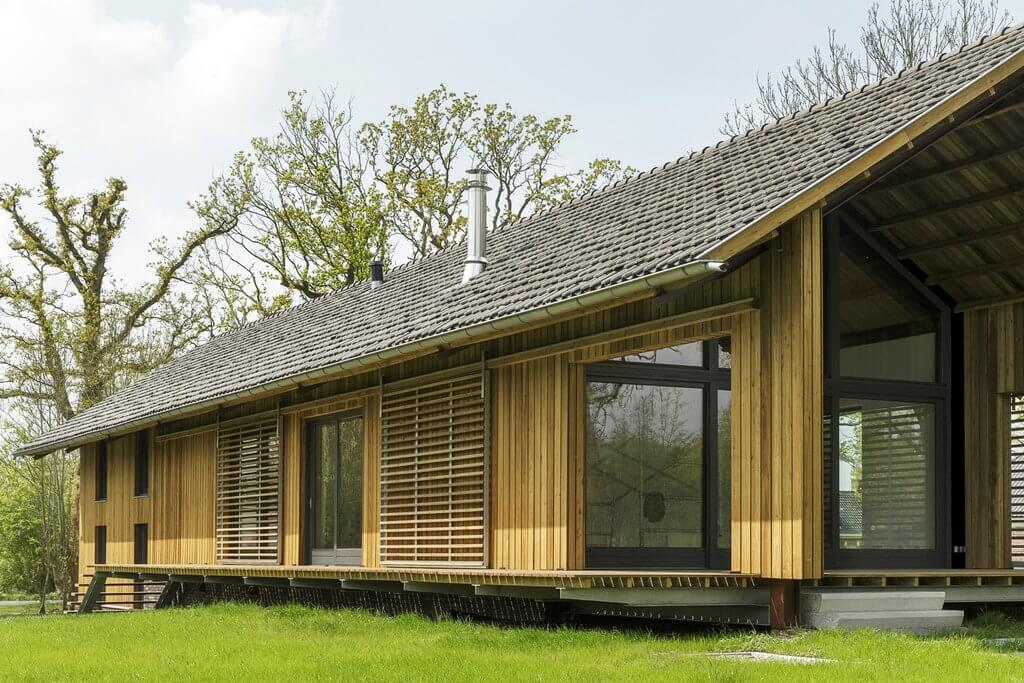Decking Oil
Wood Maintenance & Care
Thermowood and Siberian Larch is extremely durable and will last for many years even without the use of protective agents. However, it changes its color under the influence of the weather from UV rays – its dark brown gives way to a greyish color and the surface reveals the grain and cracks more clearly, which increases the possibility of superficial mold growth.
Maintenance of thermowood
Semi-transparent wood oil for outdoor use, wax or pigments protects the thermowood against UV radiation and preserves its natural appearance. The most commonly used shades are brown pigments with wood oils or glazes, after which the thermowood initially appears a little darker. If you wish, you can also choose a different color by using appropriate colors and glazes. It is important that the protective agents allow the wood to “breathe” and not stand in the way of water exchange.
The surface must be replaced depending on various factors: in addition to the intensity of wear, this is the effect of UV rays. In general, the more pigments in the solution you use, the longer you don’t have to worry about refreshing the cladding or decking. If e.g. simple pine wood needs to be refreshed after about five years, this period can be extended to up to 15 years with thermowood.
The boards can be treated individually before assembly or together as a whole after assembly. If two agents are to be used, the first should be used before and the second after assembly.
If the boards are to be joined at their end, they should be treated beforehand to seal the opened wood fibers. This means that they do not absorb moisture, which could lead to darkening at the ends.
The surface of the planks must be dry and clean before treatment. The instructions of the manufacturers of the protective equipment must always be followed.
To take care of untreated thermowood, wash it occasionally with mild soap to remove mold and dirt.
Care of Siberian larch
The larch is very resistant and inherently have a good protection. In the European classifications, it belongs to the group of particularly resistant woods and is the only conifer that belongs to hardwoods. This makes it comparable to oak, beech and walnut trees. One more reason why Siberian larch is always trendy and has a good reputation.
When it comes to larch decking, its most important characteristic is its durability and naturalness. This contributes to a natural appearance and creates a cozy atmosphere around the terrace that exudes beauty and tranquility and invites you to linger for a minute …
In order to preserve the special, rich and natural coloring of terrace boards made from this wood, we recommend oiling them. Otherwise, the planks would turn gray and take on a graphite shade. Larch deck boards do not need a more frequent surface treatment than common spruce or pine, even if their lifespan is twice as long.
Care of pine and spruce
Unprocessed pine (untreated and unimpregnated wood) is less durable than treated wood and is quickly attacked by environmental influences – especially pests, but also solar radiation and rain. Therefore, more care is needed to extend its lifespan. It should be noted that even if the planks have been impregnated under high pressure, the use of special protective agents is necessary every one to two years in order to maintain an attractive appearance and to achieve a lifespan of more than 10 to 15 years without any worries.

